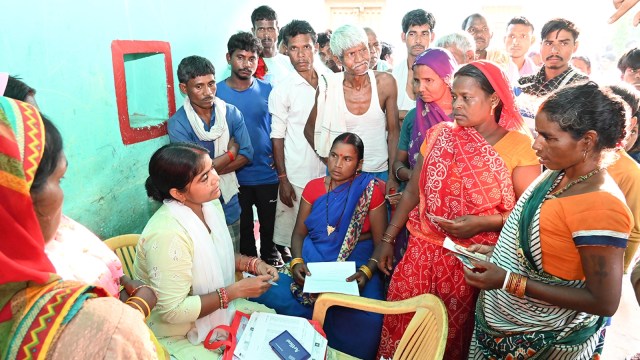
The Supreme Court’s suggestion to include Aadhaar, Voter ID, and ration cards in the ongoing Special Intensive Revision (SIR) of Bihar’s electoral rolls, if adopted by the Election Commission (EC), could provide existing voters — those enrolled after 2003 but still needing to prove their eligibility to remain on the rolls — with more accessible options, potentially easing their scramble to secure one of the 11 documents originally proposed.
The newly suggested documents are far more widely accessible. Of the three, Aadhaar and Election ID cards are nearly ubiquitous in Bihar, with ration cards available to two-thirds of the population. Consider the following:
Aadhaar, which serves as both proof of identity and address, is available to over 88% of the population. As per the Unique Identification Authority of India (UIDAI), 11,48,98,440 Aadhaar cards had been generated in Bihar as of July 10, 2025, covering more than 88% of the state’s projected population of 13 crore (as of March 1, 2025).
Furthermore, the UIDAI reports an even higher level of Aadhaar saturation in Bihar, defined as the percentage of the eligible population successfully enrolled for and issued an Aadhaar number. As of July 10, 2025, Aadhaar saturation in the state stood at 94%, with all districts except Jehanabad exceeding 100%. The highest saturation was recorded in Kishanganj (126%), followed by Katihar and Araria (123% each), Purnia (121%), and Sheikhpura (118%). Of the Aadhaar numbers generated in Bihar by July 10, 2025, 70.29% were for individuals aged 18 and above, 27.62% for those aged 5 to under 18, and 2.09% for children under 5 years old.
Ration cards are also widespread in Bihar. According to the Union Ministry of Consumer Affairs, Food and Public Distribution, nearly two-thirds of Bihar’s population holds a ration card. As of July 10, 2025, Bihar had 1,79,07,319 ration cards, covering 8,71,72,572 beneficiaries.
Voter ID cards are held by almost all of Bihar’s 7.89 crore existing electors as it is compulsorily issued to all enrolled voters by the respective state Chief Electoral Officer.
Under the June 24 order, any person not listed in the 2003 Electoral Rolls—an estimated 2.93 crore individuals—must submit at least one of the 11 documents to prove their eligibility to vote. These documents include any identity card or pension payment order issued to a regular employee or pensioner of any Central or State Government/PSU; any identity card, certificate, or document issued by Government/Local Authorities/Banks/Post Office/LIC/PSU prior to July 1, 1987; birth certificate issued by the competent authority; passport; matriculation or educational certificate issued by recognised boards/universities; permanent residence certificate issued by the competent state authority; forest right certificate; OBC/SC/ST or any caste certificate issued by the competent authority; National Register of Citizens (where applicable); family register; and land/house allotment certificate issued by the government.
As of Thursday evening, the Election Commission had not yet taken a decision on the Supreme Court’s suggestion. EC sources indicated that the option to voluntarily include Aadhaar on the form already exists, but it is used for identity verification, not eligibility. Aadhaar is not included in the 11 documents listed in the indicative list. Similarly, while voter ID numbers appear on the forms, they are used only for identification, not to establish eligibility.
(With inputs from Damini Nath)